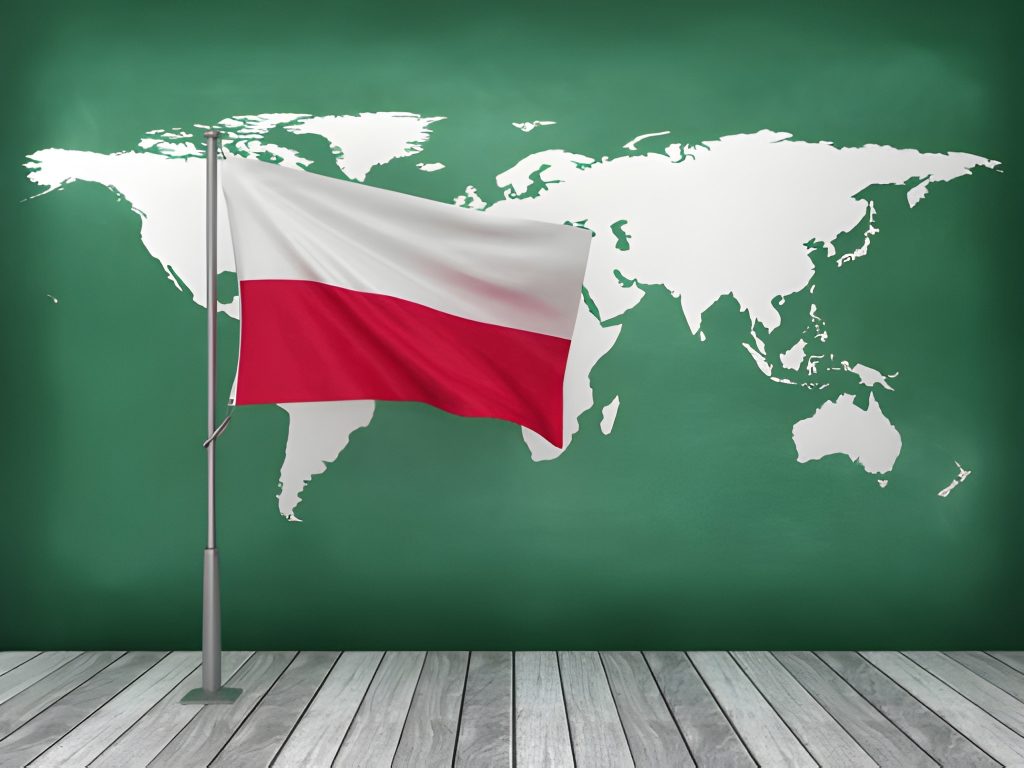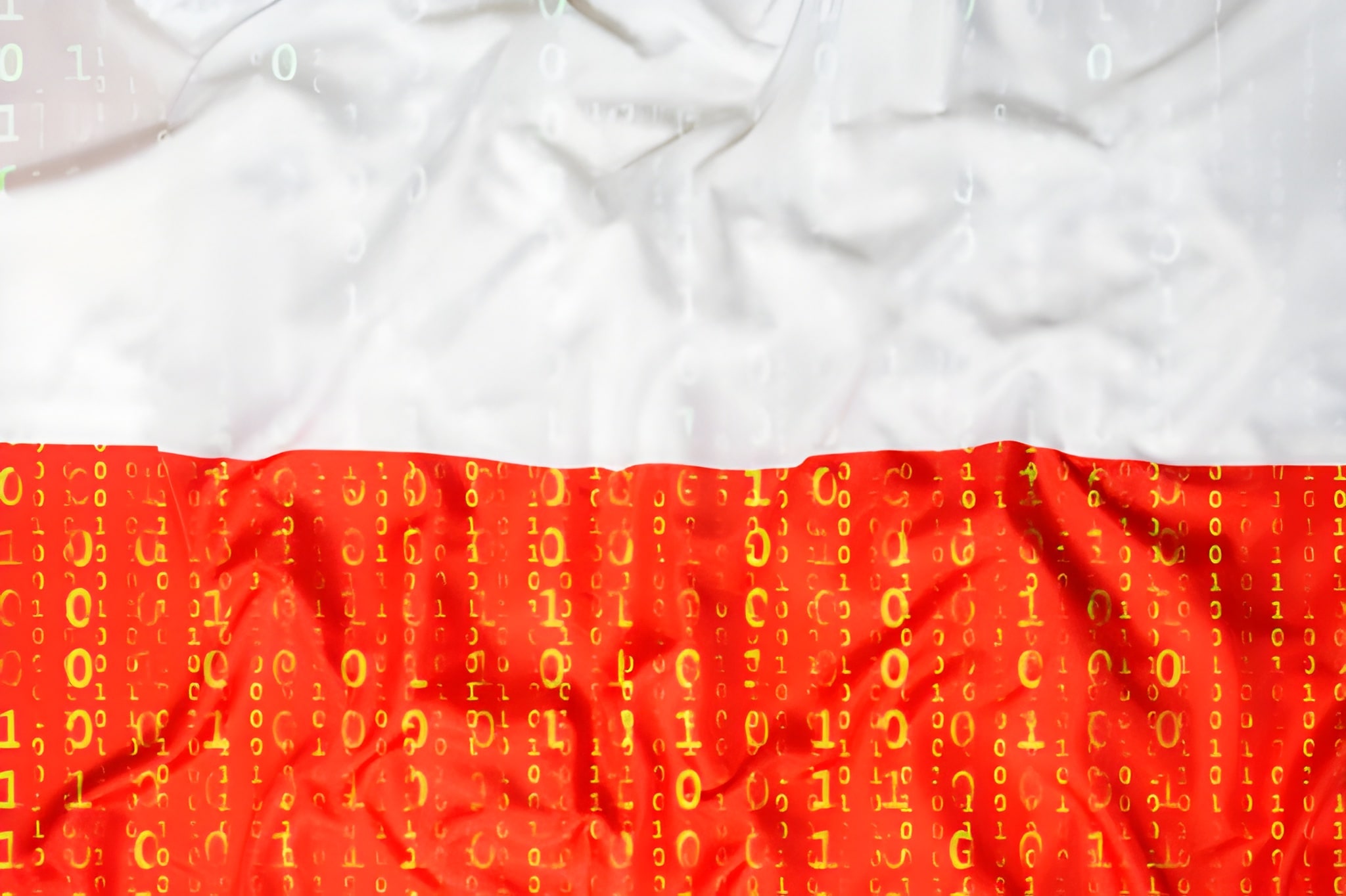Overview of Cybersecurity of Poland Infrastructure
Poland has developed a comprehensive cybersecurity infrastructure anchored by a 2018 law known as the Act on the National Cybersecurity System. This act, which transposed the EU’s first Network and Information Security (NIS) Directive, established a coordinated framework of institutions and measures to protect Polish cyberspace. Key elements include identifying “key service operators” (e.g. energy, water, banking) and requiring them to implement security measures, as well as mandating incident reporting by both critical infrastructure operators and digital service providers. Under this framework, Poland’s National Cybersecurity System encompasses public agencies, the private sector, and dedicated response teams working in unison.

Central governance of cyber policy is led by the Ministry of Digital Affairs (sometimes referred to as the Ministry of Digitization). This ministry (through the office of the Government Plenipotentiary for Cybersecurity) is responsible for building and coordinating the national cyber defense system. It prepares strategic documents and legal acts to continually strengthen cybersecurity, and it represents Poland in international cyber cooperation forums. A multi-stakeholder Cybersecurity Council serves as an advisory body on strategy, and cross-ministerial coordination is facilitated by the Government Centre for Security – an agency that contributes to crisis management and incident coordination across government.
At the operational level, Poland maintains multiple Computer Security Incident Response Teams (CSIRTs) to handle threats and incidents. There are three main national CSIRTs: CSIRT GOV (managed by the Internal Security Agency, ABW), CSIRT MON (managed by the Ministry of National Defence), and CSIRT NASK (managed by NASK, the national research institute that also operates CERT Polska). These teams monitor threats, respond to incidents, and share information with European networks. Sector-specific CSIRTs and security units also exist – for example, the financial regulator KNF has a dedicated cyber team (CSIRT KNF) for banking and finance. Through this layered approach, incidents in any critical sector must be reported to the appropriate CSIRT, ensuring a centralized awareness of cyber threats.
Poland’s cybersecurity policies are guided by national strategies that align with EU directives. The country adopted a Cybersecurity Strategy for 2019–2024 that set strategic goals such as *“increasing the level of resilience to cyber threats and protection of information in the public, military and private sectors.”* This strategy emphasized improving legal frameworks and bolstering the national cyber system’s capabilities. In fact, the Ministry of Digital Affairs is currently updating laws to implement the EU’s NIS 2 Directive of 2022, which broadens the scope of cybersecurity requirements. A draft law unveiled in 2024 aims to expand Poland’s National Cybersecurity System by including more sectors (e.g. cloud providers, digital platforms), imposing stricter risk management and incident reporting duties, and creating a national response plan for large-scale cyber emergencies. The new law also integrates the EU’s 5G network security toolbox and grants authorities power to designate high-risk vendors if needed. In short, Poland’s institutional and legal infrastructure for cybersecurity is robust and continually evolving – from high-level councils and strategies down to technical CSIRTs and sectoral regulations – all aimed at safeguarding the nation’s digital domain.
Strengths and Advantages of Poland’s Cyber Defense
Poland has emerged as a cybersecurity leader in recent years, with several notable strengths underpinning its digital defense. First, the country’s comprehensive policy framework and governance has been internationally recognized. In 2024, Poland achieved the top ranking in the National Cyber Security Index (NCSI) – an index comparing countries’ cyber readiness – surpassing traditionally high-ranked nations like Estonia and Australia. Poland earned perfect scores in multiple categories, including cybersecurity policy, critical infrastructure protection, incident response, and fighting cybercrime. This top ranking reflects effective government strategy and “dynamic responses to incidents,” as well as a strong commitment to protecting critical infrastructure. It indicates that Poland has put in place the policies, institutions, and practices needed to counter cyber threats at a national level.
Another key strength is Poland’s investment in cybersecurity resources and military capabilities. The Polish government has significantly increased funding for cyber defense. In 2025 it announced plans to raise the annual cybersecurity budget to a record €1 billion (up from €600 million in 2024). This funding supports upgrades to critical systems (for example, securing water supply control systems after attempted intrusions) and the overall fortification of public-sector networks. Poland is also dedicating 5% of its GDP to broader digital development, which includes about $0.7 billion specifically for cybersecurity projects in 2025–2026. Such financial commitment demonstrates that cyber defense is viewed as a strategic priority at the highest levels of government. In the European Union context, Poland positions itself among the top five countries globally in terms of preparedness for cyber defense actions.
The creation of a dedicated cyber military force further bolsters Poland’s defenses. The Polish Armed Forces stood up a Cyberspace Defense Forces Component Command (Polish acronym: DKWOC) in 2022, essentially Poland’s “Cyber Command.” This unit has grown to over 6,500 skilled cyber personnel responsible for military cyber defense and offensive cyber operations. The cyber forces have already gained experience through international cooperation – for instance, Polish cyber units regularly train with U.S. Cyber Command counterparts. NATO has taken note of Poland’s capabilities: during NATO’s largest cyber warfare exercise “Cyber Coalition 2023,” Poland was entrusted to serve as a Regional Command coordinating cyber operations for Central and Eastern European allies. NATO’s confidence in Poland to lead a regional cyber defense effort is a clear vote of trust in the country’s cyber expertise and military preparedness. This deep integration with NATO and the EU (Poland also actively participates in EU cyber initiatives and information-sharing groups) magnifies Poland’s defensive strength through collective security.
Additionally, Poland benefits from a high level of threat awareness and political will, which translates into proactive measures. As a nation bordering Russia and Belarus, Poland faces frequent hostile cyber activity and disinformation campaigns, especially since the Russian invasion of Ukraine in 2022. This reality has galvanized Polish authorities to harden their networks and respond forcefully to cyber aggression. Polish security agencies reportedly block or thwart roughly 99% of malicious cyber activities targeting the country. Even though thousands of attacks are attempted, relatively few succeed – a testament to strong defensive filtering and monitoring. Geopolitical pressure has effectively accelerated Poland’s cybersecurity improvements, making it one of Europe’s most cyber-vigilant states. As the director of Poland’s NASK research institute noted, Poland’s high rankings and resilience show that the actions of Polish institutions have built an image of Poland as a *“strong and resilient country against contemporary cyber threats.”*. In summary, Poland’s advantages lie in its solid national cybersecurity architecture, substantial investments and dedicated forces, integration with allied cyber initiatives, and a high state of readiness born from confronting real threats.
Vulnerabilities and Notable Cyber Incidents
Despite its strengths, Poland’s cybersecurity system faces several vulnerabilities and has endured high-profile cyber incidents that expose areas for improvement. One structural challenge is the breadth and frequency of cyber attacks targeting Poland, which test the limits of its defenses. Officials estimate that Polish critical infrastructure faces between 20 and 50 attempted cyber attacks every day amid heightened tensions with Russia. While most of these attacks are stopped, the sheer volume creates constant pressure. Notably, in 2023 Polish authorities revealed that Russian-backed hackers had managed to infiltrate a city’s water supply control system – thankfully, the attack was foiled before the perpetrators could disrupt water distribution. In the same timeframe, a few cyber intrusions did succeed against Polish hospitals, forcing at least two facilities to suspend operations for several hours and resulting in the theft of some medical data. These incidents underscore that critical services (healthcare, utilities, transport) remain at risk from sophisticated threat actors. Any weaknesses in network segmentation or outdated industrial control systems can be entry points for attackers – a concern as Poland races to modernize systems (for example, migrating government services to cloud infrastructure) to improve security.
Poland has also been the victim of state-sponsored cyber espionage and influence operations that highlight certain procedural weaknesses. A notorious case occurred in 2021, when hackers linked to Russia’s GRU (military intelligence) breached email accounts of over 100 Polish officials and politicians, including the Prime Minister’s chief of staff. The group UNC1151 (part of the “Ghostwriter” campaign) gained access to private email correspondence, leading to leaked communications and political embarrassment. This incident revealed a vulnerability in operational security: some officials had been using personal email for sensitive work matters, making them easier targets. It prompted criticism that cybersecurity protocols for government personnel were not strictly enforced. The fallout from the “Dworczyk email affair” (named after the official whose inbox was leaked) pushed Poland to improve digital hygiene among public officials – yet it remains a cautionary tale about human-factor weaknesses that technology alone cannot fix.
Another weakness facing Poland – as with many countries – is a shortage of cybersecurity professionals relative to demand. As cyber threats grow, Poland struggles to fill all needed roles in both government and industry. Estimates indicate that Poland can meet only about 15% of its cybersecurity workforce demand domestically, with the wider European shortage around 400,000 specialists. This talent gap can lead to under-resourced security teams, slower incident response, and heavier reliance on automated tools. It also puts pressure on the existing experts who must cover a lot of ground. The Polish government is investing in cyber education and even recruiting within its armed forces (the new Cyber Command has thousands of personnel), but training skilled professionals takes time. In the private sector, this gap is reflected in preparedness levels: a recent survey found nearly 69% of Polish companies experienced at least one cybersecurity incident in 2023, yet only 26% of companies had established formal procedures to respond to such incidents. The majority of businesses are still ill-prepared for cyber attacks, which is a significant national vulnerability given that attacks often strike private companies and critical supply chain partners.
Poland’s heavy reliance on digital systems and rapid digitization also create technology-induced vulnerabilities. The spread of Internet-of-Things (IoT) devices and the push to online services broaden the attack surface. Experts in Poland note rising threats from ransomware (which has hit Polish organizations, including a 2022 “Prestige” ransomware campaign attributed to a Russian state group that targeted logistics companies in Poland and Ukraine), as well as potential future risks from AI-enabled attacks and quantum computing that could undermine current cryptography. Meanwhile, legacy issues like exposure of personal data in public databases pose security and privacy concerns – for instance, Poland’s national ID number (PESEL) is widely used and sometimes publicly accessible, which the national data protection office flagged as a cyber risk that could facilitate identity theft. In summary, Poland remains a high-value target for hostile actors and has experienced incidents ranging from espionage to critical infrastructure hacks. Gaps in workforce, inconsistent cybersecurity practices in some organizations, and ever-evolving technical threats constitute the primary weaknesses in Poland’s otherwise strong cyber posture.
Effectiveness in the Global Cybersecurity Landscape
In the broader global context, Poland’s cybersecurity system is regarded as highly effective and resilient, especially for a country of its size and GDP. International indices and real-world performance both suggest that Poland punches above its weight in cyber defense. As mentioned, Poland’s National Cyber Security Index ranking is first in the world, reflecting its well-rounded capabilities in prevention, protection, and response. Another assessment, the MIT Technology Review’s Cyber Defense Index 2022/23, placed Poland 6th globally – above major economies like Japan, the UK, and China. This ranking highlighted Poland’s strong regulatory environment and its success in repelling frequent cyber attacks from neighboring adversaries. In particular, Poland (along with South Korea) was commended for effectively withstanding cyber aggression from a larger hostile power (in Poland’s case, Russia) through a combination of robust defenses and active countermeasures. Such accolades indicate that Poland’s cyber defenses are not just theoretically sound on paper, but have proven their mettle against persistent real-world threats.

Poland’s effectiveness is further demonstrated by its ability to contribute to collective cybersecurity efforts. Within NATO, Poland is increasingly seen as a provider of security, not merely a consumer. For example, by leading a regional cyber command role in NATO exercises, Poland shows it can coordinate complex defensive cyber operations in cooperation with allies. It has also been supporting Ukraine’s cyber defense during the war, sharing threat intelligence and know-how, which in turn helps Poland refine its own skills. In the EU, Poland actively engages in the Cyber Rapid Response Teams initiative and shares information through networks coordinated by the EU Agency for Cybersecurity (ENISA). These contributions elevate Poland’s status in the international community as a key stakeholder in European cybersecurity, on par with – and sometimes ahead of – traditional leaders like France, Germany, or even the oft-cited Baltic cyber powers. For instance, Polish institutions like CERT Polska (NASK) collaborate across borders to take down botnets and respond to malware campaigns, enhancing regional security.
That said, Poland’s global effectiveness also faces tests. One measure of success is the ability to continuously adapt to new threats. So far, Poland has shown agility: when faced with novel threats like supply-chain attacks or GPS jamming incidents near its borders, it has responded by quickly investing in defenses (such as hardening satellite navigation systems). The government’s quick injection of €80 million to secure municipal water systems after an attempted hack is a case in point – a rapid mitigation effort that likely prevented future incidents. In the ever-shifting landscape of cyber threats, Poland’s challenge will be to maintain this responsiveness and not become complacent with past laurels.
Comparatively, Poland stands out among NATO and EU peers due to the intensity of threats it faces and its high level of readiness. Wealthier Western European nations may have more financial resources, but some have not experienced the same volume of state-sponsored cyber aggression and thus have not operationalized their cyber defenses to the degree Poland has. For example, Poland fends off dozens of serious Russian cyber sabotage attempts daily, a situation only a handful of NATO countries (like the Baltic states and Ukraine) can relate to. This trial by fire in Eastern Europe has effectively made Poland one of the most battle-tested cyber defenders in the EU. It’s telling that Poland is now often cited as the EU’s most frequent target of Russian cyber attacks – and yet suffers very limited damage due to its defenses. In the global arena, Poland’s experience and resilience enhance the collective cybersecurity of alliances like NATO. However, it also means Poland must constantly stay a step ahead, as its cyber adversaries are among the most advanced (e.g. Russia’s state-backed hacking units). Overall, Poland’s cybersecurity system can be deemed very effective by global standards, combining strategic foresight with real-world defensive successes, although it operates under greater strain than most, given its geopolitical position.
Comparison with Other European and NATO Cybersecurity Systems
When comparing Poland’s cybersecurity system to those of other European Union or NATO members, several points of distinction and similarity emerge. Poland’s approach is broadly aligned with EU standards – in fact, it mirrors common EU frameworks like the NIS Directive, which all member states implement. Like countries such as France, Germany, and the Netherlands, Poland has a central authority (Ministry of Digital Affairs) and a national CSIRT network; it also has sectoral regulators for cybersecurity in finance, energy, health, etc., similar to its peers. However, Poland differs in emphasis and scale of certain efforts. For example, Poland’s military cyber command (DKWOC) is relatively large (6,500+ personnel) for a mid-sized country, indicating a commitment akin to leading NATO militaries like the United States or United Kingdom in developing cyber warfare capabilities. By contrast, many NATO countries have only small military cyber units or integrate cyber into existing signals branches. Poland’s decision to establish a standalone Cyberspace Defense Forces Command is closer to the approach of the U.S. Cyber Command or UK’s Joint Cyber Unit, underlining an advanced force structure not yet universal across NATO.
In terms of readiness and threat environment, Poland is often compared to the Baltic states (Estonia, Latvia, Lithuania), which also face intense cyber threats from Russia. Estonia, for instance, is famous for its cyber defenses and was an early pioneer after the 2007 cyberattacks it suffered. Poland’s system has now reached comparable stature – Poland even overtook Estonia in the 2024 NCSI ranking for cybersecurity maturity. Both Poland and Estonia emphasize public-private partnerships and cyber awareness across society. Yet Poland’s much larger size and critical infrastructure mean it must secure a broader attack surface, from major cities and industries to thousands of local administrations. This has pushed Poland to develop more extensive internal structures (like hundreds of cybersecurity coordinators across government agencies) and to allocate bigger budgets in absolute terms. Smaller countries may be nimbler or concentrate expertise in one agency, whereas Poland’s system is more decentralized by necessity.
Western European nations such as Germany or Italy have historically been less frequently targeted by state-sponsored cyberattacks (until recent years) and in some cases were slower to build up comprehensive cyber strategies. Poland’s urgency in addressing cyber threats – driven by clear and present danger – has arguably put it ahead in practical defense. For example, Poland’s cybersecurity spending (relative to GDP and as a share of defense spending) is among the highest in Europe, whereas a large economy like Germany only recently created a dedicated cyber command and is still organizing its cyber resilience centers. On the other hand, countries like France and the UK have notable offensive cyber programs and well-funded intelligence agencies, areas where Poland is still catching up. The UK’s National Cyber Security Centre (NCSC) and France’s ANSSI provide centralized capabilities that Poland matches through a combination of its Ministry of Digital Affairs and the CSIRT network. One area where Poland clearly stands out is the political consensus and focus on cybersecurity – Polish authorities across the spectrum agree on countering cyber threats (the Parliament even achieved cross-party support for emergency cyber funds), whereas in some countries cybersecurity can be a lower priority issue.
Within NATO, Poland’s system is comparable to that of other frontline member states in Eastern Europe, but with Poland taking a leadership role. For instance, Poland and Lithuania co-hosted some of the NATO Cyber Rapid Reaction teams and exercises. Poland’s involvement in NATO’s Cooperative Cyber Defence Centre of Excellence (CCDCOE) in Estonia is active, and Poland often contributes officers and expertise to NATO cyber projects. By comparison, Southern European NATO members (like Spain or Greece) face different threat profiles (more cybercrime, less state-sponsored hacking) and thus orient their systems accordingly. Poland’s focus is very much on nation-state threats and critical infrastructure protection, aligning it closely with NATO’s collective defense ethos.
In summary, Poland’s cybersecurity system is among the more advanced and battle-tested in Europe, especially in the defensive realm. It shares the EU-wide legislative base (GDPR, NIS/NIS2, etc.) with peers, but Poland distinguishes itself through the scale of its investments, the integration of cybersecurity into national defense, and the real-world experience gained from countering incessant cyber aggression. Countries like Estonia and Finland are its closest analogues in terms of threat awareness, while larger allies look to Poland as a case study in building resilience under pressure. It is fair to say Poland now belongs to the top tier of NATO cyber-ready countries, helping set standards that others study and emulate.
Recommendations to Strengthen Cybersecurity of Poland
To address its remaining weaknesses and stay ahead of emerging threats, Poland can pursue several best practices and strategic actions:
- Expand Cybersecurity Workforce and Skills Development: Tackling the talent shortage is critical. Poland should continue investing in cyber education programs, professional training, and incentives to retain skilled experts. Public-private partnerships with universities can create pipelines for new cybersecurity specialists. Given that Poland currently meets only a fraction of its cyber workforce needs, initiatives like scholarships, cyber bootcamps, and re-skilling IT workers for security roles will help grow the talent pool. Additionally, leveraging international expertise through NATO and EU cyber fellowships can temporarily fill gaps and up-skill Polish teams.

- Enhance Private Sector Preparedness and Public-Private Cooperation: The fact that nearly 3 in 4 Polish companies lack formal incident response plans indicates a need for better business outreach and support. The government can encourage and assist companies (especially operators of essential services and smaller businesses) to adopt cybersecurity frameworks and emergency response playbooks. Regular cyber drills involving both government agencies and private utilities/companies would improve coordination. Information-sharing platforms (e.g. sectoral ISACs – Information Sharing and Analysis Centers) should be strengthened so that threat intelligence from the security services and CSIRTs quickly reaches businesses. By tightening the public-private link, Poland can ensure that even less resourced entities benefit from early warnings and best practices developed by national experts.
- Modernize and Secure Critical Infrastructure Systems: Poland should accelerate efforts to modernize legacy IT and OT (operational technology) systems in critical infrastructure. As seen with the attempted water system hack, older control systems can be vulnerable if not properly isolated and updated. Investments should prioritize network segmentation, strong authentication, and fail-safe mechanisms in sectors like energy, healthcare, transportation, and water management. The government’s plan to move more infrastructure into secure cloud environments (with robust encryption and redundancy) is a positive step. Adopting zero-trust architecture principles across government networks will also limit attackers’ lateral movement if they do breach a perimeter. Additionally, conducting third-party security audits of all critical infrastructure operators can help uncover hidden weaknesses before adversaries do.
- Fully Implement the NIS2 Directive and Strengthen Legal Frameworks: Poland’s ongoing update of its cybersecurity law in line with NIS2 should be seen through to completion and rigorously enforced. NIS2 will bring more sectors (like digital providers and medium-sized companies) under cybersecurity obligations and set higher standards for risk management and incident reporting. Poland should ensure that the new National Cybersecurity System Act (expected in late 2024 or 2025) provides clear authority, avoids overlaps, and includes meaningful penalties for non-compliance to incentivize good security practices. The legal framework should also be kept agile – as the Personal Data Protection Office advised, laws must be updated to keep pace with technology (e.g. addressing emerging threats like misuse of biometric data or AI-driven identity theft). Regular review of legislation against the evolving threat landscape will help plug any legal gaps that attackers might exploit.
- Improve Cyber Hygiene and Incident Response at All Levels: Human error remains a leading cause of breaches, so continued emphasis on cybersecurity awareness is vital. Poland can expand initiatives to train civil servants, military personnel, and employees of critical industries in secure practices (phishing resistance, proper data handling, using secure communication channels). The 2021 email breach of top officials underscores this need. Strict enforcement of rules (like prohibiting the use of personal email for official business and requiring multi-factor authentication on all government accounts) can reduce low-hanging-fruit vulnerabilities. Simultaneously, Poland should refine its national incident response plans. The draft law’s proposal to create a National Cyber Incident Response Plan for large-scale crises is an excellent move – once in place, this plan should be regularly drilled, much like disaster response exercises, so that in the event of a massive cyber incident (for example, a nationwide ransomware outbreak), roles and procedures are clear for a swift, coordinated reaction.
- Continue International Collaboration and Intelligence Sharing: Poland’s security is reinforced by its allies, so doubling down on collaboration is key. Maintaining close ties with NATO’s cyber command structures, the EU’s cybersecurity bodies, and bilateral partners (like the United States, which already engages in joint cyber exercises) will ensure Poland benefits from the latest threat intelligence and technological tools. Sharing Poland’s own hard-won expertise – for instance, methods to counter Russian hacking groups – will encourage reciprocity and assistance when Poland needs it. Poland will hold the EU Council presidency in 2025 and has identified cyber diplomacy as a priority; this is an opportunity to champion collective cybersecurity initiatives, such as an EU-wide rapid response team or more funding for cross-border cyber projects. By leading on the international stage, Poland can shape a more secure regional cyberspace while also gaining support to address threats that do not respect national boundaries.
In implementing these recommendations, Poland can further mitigate its vulnerabilities and reinforce the impressive progress it has made in cybersecurity. The overarching best practice is one Poland already recognizes: treat cybersecurity as an ongoing process of resilience-building, not a one-time goal. As one Polish expert noted, no system can be 100% secure, so the aim must be to continually strengthen defenses and prepare effective responses. With sustained commitment, Poland can close the remaining gaps in its cyber armor and set an even higher standard for other nations to follow.
Conclusion
Poland’s cybersecurity system today stands as a robust shield forged in a challenging environment. Over the past decade, the country has built up an extensive infrastructure of laws, institutions, and teams dedicated to cyber defense – from its National Cybersecurity System and strategy frameworks to elite military cyber units. These efforts have endowed Poland with clear strengths: strong policies, ample political will and funding, and resilience proven against a barrage of hostile cyber activity. At the same time, recent incidents reveal that no defense is infallible. Poland faces ongoing weaknesses such as a need for more skilled personnel, patchy preparedness in parts of the private sector, and the ever-present race to outpace evolving threats. On balance, Poland is highly effective in safeguarding its digital realm, often cited among the top echelons globally for cyber readiness. Its experience is both a warning and a lesson to allies – showing what a determined adversary might attempt, and how a nation can successfully fortify itself in response. By continuing to invest in people, technology, and partnerships, and by addressing its remaining gaps head-on, Poland can further enhance its cybersecurity posture. In an era when cyber threats grow more complex by the day, Poland’s journey illustrates the importance of proactive strategy, resilience, and collective defense. The Polish example ultimately reinforces that cybersecurity is a shared, never-ending mission – one that Poland is poised to continue leading, within Europe and on the world stage, in the years ahead.
Sources: Recent government and industry reports, news articles, and official statements were used to compile this analysis, including data from Poland’s Ministry of Digital Affairs and NASK (CERT Polska), national strategy documents, and reputable cybersecurity indices. Notable references include the Industrial Cyber news report on Russian cyber sabotage attempts, Reuters and BleepingComputer coverage of the 2021 email hacking incident, the MyImpact report on Poland’s NCSI ranking, and the World Economic Forum’s cybersecurity outlook highlighting daily attack figures on Polish infrastructure. These and other cited materials provide a foundation for evaluating Poland’s cybersecurity system as of 2025. The information has been synthesized to present a cohesive picture suitable for a general but educated audience interested in global cybersecurity issues.

